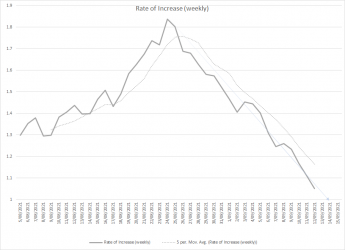105k tests is hardly a low number
Whether a “low” number or not can be analysed by looking at rolling averaging over time and then comparing that day to the rolling avg then looking at the standard deviation.
The idea of no flu influencing testing numbers is irrelevant as that scenario applies essentially to all the data throughout the pandemic or at least the latest winter season.
So compared to the last 7 days the testing number for Saturday is approx 25000 lower than the rolling avg for the week.
The implication is that if an extra 25000 people were tested and assuming the same 1.2% positive rate then the expected positive would be 1400 or so.
It cannot entirely be extrapolated to say well what if 1 million people got tested? - ie to what degree does 1.2% hold?.
But it does give a sense that the daily numbers have a certain variability and uncertainty about them.
Some simplistic calculations to see if 105K is indeed a low number (there may be better ways of analysing this but thats for others):
The last 30 day rolling average for testing numbers = 141630 avg tests per day over last 30 days
The standard deviation for this is = +/- 24735
If using 15 days = 133779 avg tests per day and standard deviation +/- 18797
So Saturday's testing number of 105505 is approx 1.5 standard deviations from ( in this case below) the average over the last 30 days and indeed also for the last 15 days.
In fact Saturdays testing numbers (over the last month or so seem to be lowest compared to every other day of the week (though not entirely)
In rank order for day of week from highest to lowest avg testing number: Sunday, Wednesday, Friday, Thursday, Tuesday, Monday, Saturday
Speculative:
Saturday's Covid positive number therefore could be artificially lower that what it should be based on the above numbers.
(The definition of an Outlier is 3 standard deviations from the mean)















